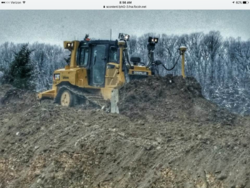I made the mistake of buying a cheap cant hook with timber jack from Northern Tool. THe tip never did seem to want to grab the logs, and after rolling a couple dozen logs (none of them particularly large) the tip of the hook broke off at the weld. From the reviews on their site, I was not the first to have this problem with that tool (though they kept rejecting my review where I mentioned the problem). I replaced the hook with one from another company, and have found it a much better design overall - not weld to break, and better hook geometry, so it grabs better.
Cant hooks seem to be more useful on flat ground, or around a log deck. IMO, Peaveys are better in the woods, especially on hilly ground. I'm about to buy a Logrite peavey with 48" handle - that length is plenty for my needs. Once I get this I'll sell my old Norther Tool Cant Hook/Timber Jack.
I debated getting the timberjack attachment for the Logrite, but decided not to. I've found it's quicker to just cut most of the way through, then roll the log and cut the rest of the way, as opposed to jacking up the log, cutting some pieces the repositioning and jacking it up again to cut more pieces. If I did more work on a landing, or in other clear, flat places, I might have more use for the timber jack.





